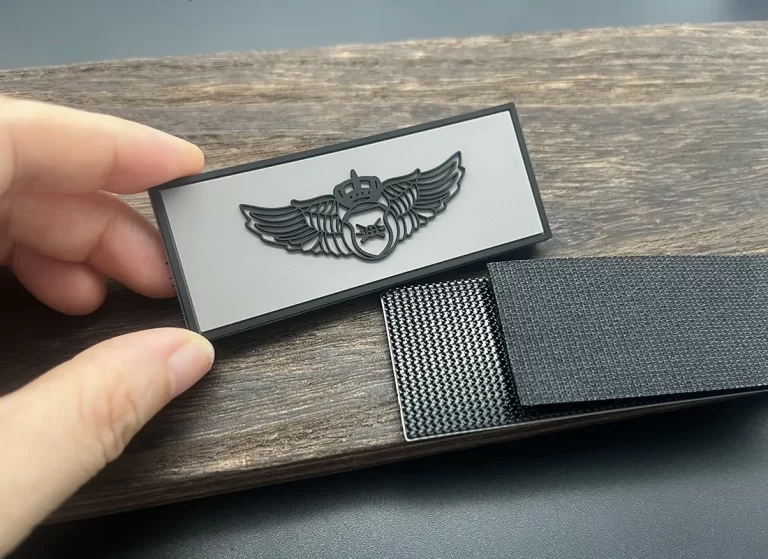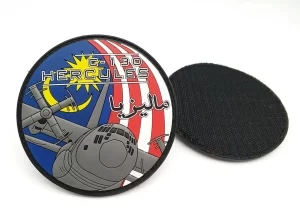What are some design considerations when attaching PVC patches to clothing?
Attaching PVC patches to clothing is a creative way to personalize, brand, or enhance the aesthetic of your garments. However, to ensure a visually appealing and long – lasting result, several design considerations come into play. These considerations not only affect the overall look but also the functionality and durability of the attachment.
Placement on the Clothing
Focal Points
The first aspect to consider is where to place the PVC patch on the clothing. Identifying focal points on the garment is crucial. For example, on a T – shirt, the center of the chest, the upper back, or the sleeves are common focal areas. Placing a patch on the center of the chest immediately draws the eye, making it ideal for showcasing a bold logo or a statement – making design. If you want the patch to be a more secondary but still noticeable element, the sleeves can be a great choice. On a denim jacket, the back is often a prime location for larger, more elaborate patches, creating a dramatic and eye – catching effect.
Garment Shape and Style
The shape and style of the clothing also influence patch placement. For a tailored blazer, a small, tasteful PVC patch on the lapel can add a touch of uniqueness without overwhelming the classic style. In contrast, a baggy, street – style hoodie can accommodate larger and more eccentric patches on the front, back, or even on the kangaroo pocket. For dresses, consider areas like the hemline, the yoke, or the side seams. A patch on the hem of a skirt can give it a bohemian or retro – inspired look.
Patch Size and Proportion
Garment Proportions
The size of the PVC patch should be in proportion to the size and style of the clothing. A large, oversized patch might look great on a big, loose – fitting sweater but could overpower a petite blouse. When choosing the patch size, take into account the overall dimensions of the garment. If it’s a children’s garment, smaller patches are usually more appropriate to maintain a balanced look. For example, a toddler’s T – shirt could feature a small, cute PVC patch with a cartoon character, while an adult’s work shirt might benefit from a more subdued, medium – sized patch with a company logo.
Design Complexity
The complexity of the patch design also affects the appropriate size. A highly detailed and intricate PVC patch may need to be larger to showcase all the elements clearly. On the other hand, a simple, minimalist design can work well in a smaller size. For instance, a patch with a detailed floral pattern might need to be at least a few inches in diameter to show off the fine details, while a single – color, monogram – style patch can be smaller and still make an impact.
Color Coordination
Complementary and Contrasting Colors
Color is a powerful design element when attaching PVC patches to clothing. You can choose colors that are complementary to the garment’s color for a harmonious look. For example, if you have a blue shirt, a PVC patch in shades of orange (blue’s complementary color on the color wheel) can create an eye – catching yet balanced combination. Alternatively, you can opt for contrasting colors to make the patch stand out. A black leather jacket with a bright, neon – colored PVC patch will create a bold and edgy statement.
Brand or Theme Colors
If the PVC patch is for branding or representing a particular theme, using brand – specific or theme – related colors is essential. A sports team’s PVC patch should use the team’s official colors to maintain brand identity. For a beach – themed patch on a summer dress, colors like turquoise, sand – beige, and coral can evoke the right mood.
Adhesive and Attachment Method
Visibility of the Attachment
The method of attaching the PVC patch can also impact the design. If you’re using an adhesive – based attachment, consider how visible the adhesive will be, especially if the patch has a cut – out or open – work design. Some adhesives may seep through small gaps and be visible from the front, which could detract from the overall look. In such cases, using a clear, low – profile adhesive or sewing the patch on might be a better option.
Durability and Flexibility
The attachment method should also ensure the durability of the patch while allowing for some flexibility. PVC patches need to withstand regular wear and washing. Sewing the patch on, especially with a strong, durable thread, can provide long – lasting attachment. However, if the clothing is stretchy, you may need to use a stretch – stitch or an adhesive that can flex with the fabric to prevent the patch from cracking or peeling off.
Design Integration
Style Consistency
The design of the PVC patch should be consistent with the overall style of the clothing. If the garment has a vintage – inspired style, a PVC patch with a retro – looking design, like an old – fashioned logo or a classic floral print, would be a great fit. For a modern, minimalist piece of clothing, a sleek, geometric – shaped PVC patch with a simple color scheme would enhance the aesthetic.
Functionality and Design
Consider the functionality of the clothing when designing the patch attachment. If it’s a work uniform, the patch should not interfere with any pockets, zippers, or other functional elements. Also, ensure that the patch does not cause any discomfort to the wearer, especially if it’s in an area where the skin comes into contact with the fabric, like the collar or under the arms.
In conclusion, when attaching PVC patches to clothing, careful consideration of placement, size, color, attachment method, and design integration can transform a simple garment into a unique and stylish piece. By taking these factors into account, you can create a look that is both visually appealing and practical.



